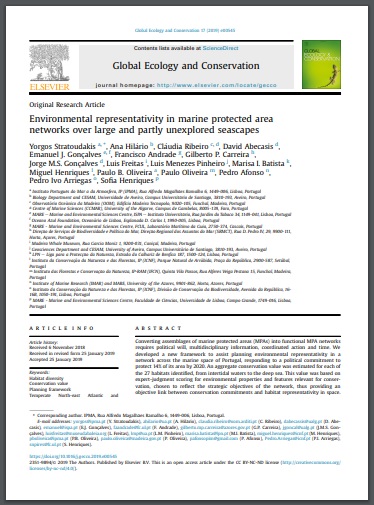
Converting assemblages of marine protected areas (MPAs) into functional MPA networks requires political will, multidisciplinary information, coordinated action and time. We developed a new framework to assist planning environmental representativity in a network across the marine space of Portugal, responding to a political commitment to protect 14% of its area by 2020. An aggregate conservation value was estimated for each of the 27 habitats identified, from intertidal waters to the deep sea. This value was based on expert-judgment scoring for environmental properties and features relevant for conservation, chosen to reflect the strategic objectives of the network, thus providing an objective link between conservation commitments and habitat representativity in space. Additionally, habitats' vulnerability to existing anthropogenic pressures and sensitivity to climate change were also scored. The area coverage of each habitat in Portugal and within existing MPAs (regionally and nationally) was assigned to a scale of five orders of magnitude (from 10%) to assess rarity and existing representation. Aggregate conservation value per habitat was negatively correlated with area coverage, positively correlated with vulnerability and was not correlated with sensitivity. The proposed framework offers a multi-dimensional support tool for MPA network development, in particular regarding the prioritization of new habitats to protect, when the goal is to achieve specific targets while ensuring representativity across large areas and complex habitat mosaics. It requires less information and computation effort in comparison to more quantitative approaches, while still providing an objective instrument to scrutinize progress on the implementation of politically set conservation targets.














